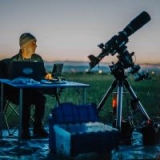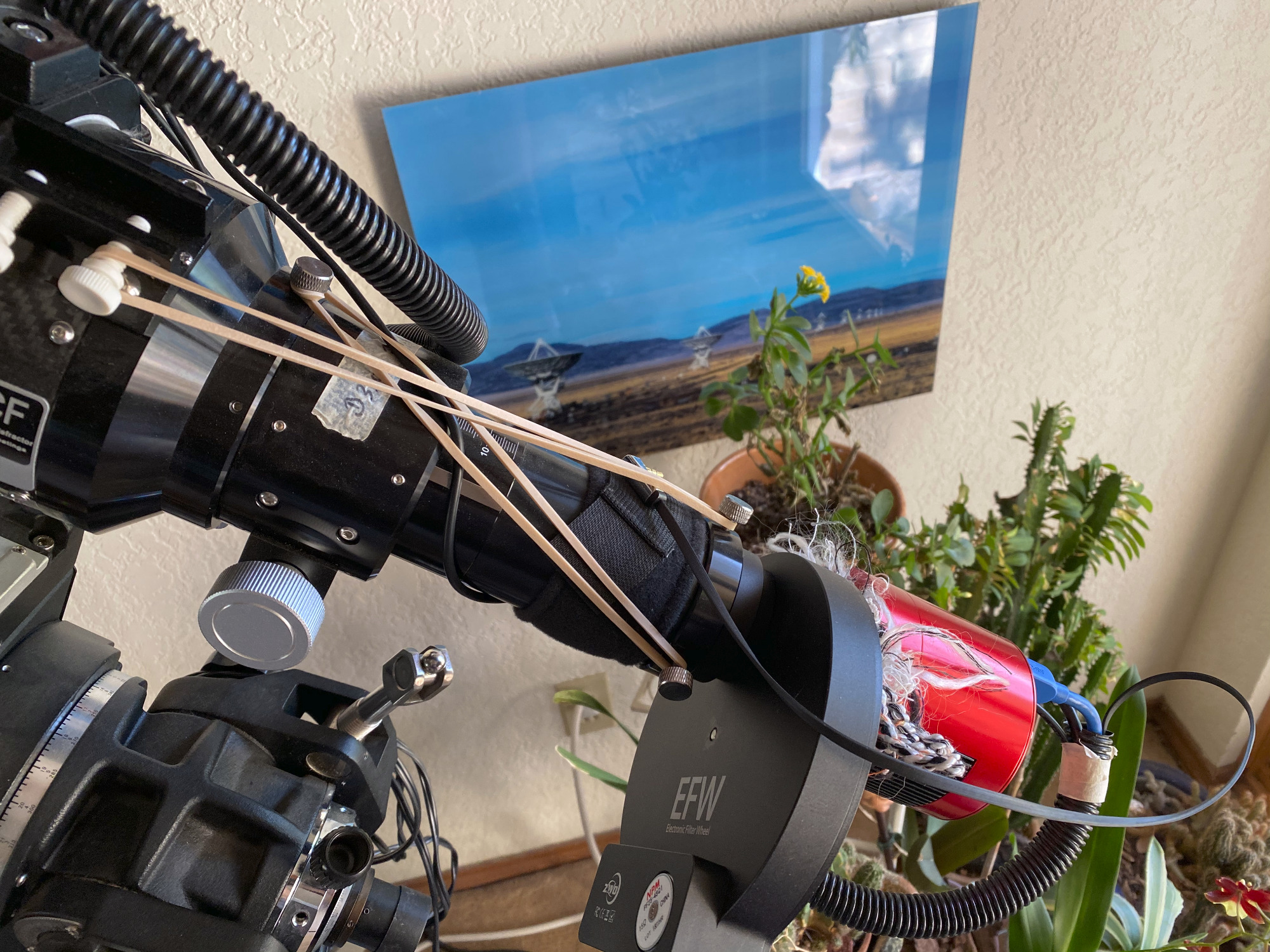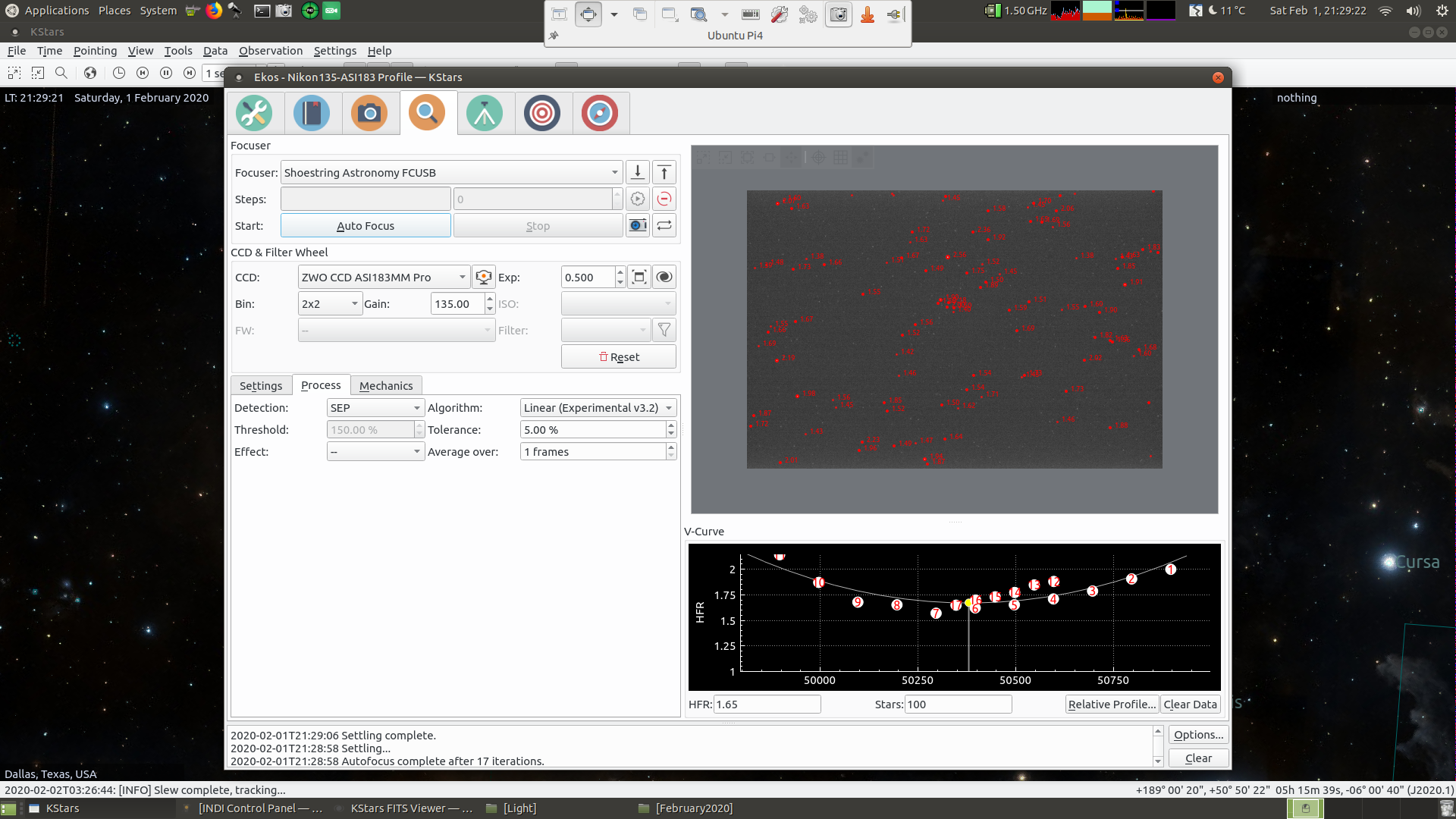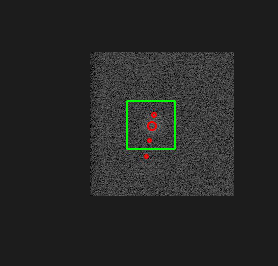INDI Library v2.0.7 is Released (01 Apr 2024)
Bi-monthly release with minor bug fixes and improvements
For those with focus issues
- Jose Corazon
-

- Offline
- Supernova Explorer
-

- Posts: 1119
- Thank you received: 182
Replied by Jose Corazon on topic For those with focus issues
That is a beautiful picture, Soren!
Regarding the FCUSB and the AccuFocuser/analog DC motor focuser: I basically use the same system, although the motors I just got from Amazon for $15, so cheaper than the (now discontinued) AccuFocuser system.
It works beautifully in my hands, but there are a few things to consider.
I think the main issues you are facing results from the differential load on the motor due to the weight of the camera/filter wheel. That means the motor will move faster in the outward direction than the inward direction.
But that can easily be fixed. This is the way how I did it:
1) Note the position on the focus tube where your telescope is in focus.
2) Then attach a rubber band or a string with a spring to the telescope and the other end to the focuser tube.
3) Next, you move the telescope into a 60 degree vertical position, so that you have average gravity force pulling on the tube.
4) Loosen the clutch screw, so that the tube now moves freely
5) Add or remove rubber bands until the tube is in equilibrium at the focus point, i.e. it neither is being pulled inside by too much force from the rubber bands and neither does it slide out.
That pretty much equalizes the force the motor has to work against when moving the tube inwards and outwards and now the timed movements will be approximately equal. That will dramatically improve the ability of any of the algorithms to find focus. Basically, the principle is no different from balancing the mount. You want to minimize the strain on the motors there as well.
A couple of other things that I find important:
1) Do not make the steps the motor moves too small. If they are smaller than the variability of the HFR, the algorithm will have trouble calculating the V-curve.
2) Hy suggests using SEP, which is definitely better than the Gradient algorithm you are using. However, for some reason I find that the Centroid Algorithm works best for me, closely followed by SEP.
3) I just use Full Field, without Autostar.
Unless there was a change in the code recently that may have caused these problems, this methods works beautifully for me. Here another screenshot showing the quality of the V curve using Hy's Linear algorithm:
Please Log in or Create an account to join the conversation.
Replied by Giles on topic For those with focus issues
The old driver had a setting to set the number of Steps / Second it would drive the focuser at.
I have split this out to two settings, one to control the rate that it focuses inwards and another to control the rate that it focuses outwards.
The idea is, you can, say point your telescope at a 45 degree angle and adjust these values so that focusing in and focusing out occurs at the same rate.
Because the HitecAstroDC is a relative DC motor and not a stepper motor, steps are effectively milliseconds of focusing in a direction, and focusing out is usually faster than focusing in (due to the gravity assistance of your imaging train).
Patch is attached, quickly dry tested with my focuser, will try it out on the next sky watch outing.
Disclaimer - I know nothing of programming, and if I've done something very silly then maybe someone could help correct it!
Please Log in or Create an account to join the conversation.
- Elias Erdnuess
-

- Offline
- New Member
-

- Posts: 8
- Thank you received: 6
Replied by Elias Erdnuess on topic For those with focus issues
I had very similar issues than you:
1.) The HFR values are "noise", so to get a reliable v-curve, I either had to use long focus-exopsures or averaging over many frames. This made autofocus very slow and not practical.
2.) When focusing with the full field, the different detection algorithms either detected to few stars, or to many "false" stars (noise, hot pixel).
3.) The the different focus algorithms move all very far out of the focus, so that eventually they don't recognize stars properly anymore. That gives completely wrong measurments for the HFR values at the edges of the v-curve.
All these issues prevented me from using autofocus automatically and without supervision.
I found a solution I am very happy with:
- Don't focus on your actual target, but focus on a bright star close to your target (really bright). (create a "fake" job in your scheduler, to slew to a bright star and focus, before slewing to your actual target).
- With a short focus-exposure time of 0.5 seconds, star detection "gradient", "Auto-select star" and "subframe", the algorithm reliably picks up the very bright star as the target to focus on. The short exposure time and the subframing means, that you can rapidly take many frames to get a more averaged (and less noise hfr measurments). (I average over 8 frames)
- The linear algorithm works best. Even if it moves far away from the minimum of the v-curve, the star is so bright that the algorithm still detects it reliably.
Because the v-curve is very clear and not noise at all, I can choose a tolerance of 0.5%.
With these settings, the automatic focuser works without intervention flawlessly and very quickly.
The only downside is the requirment to work with "fake" jobs in the scheduler, to slew to the bright focus-star of your choice.
Please Log in or Create an account to join the conversation.
- Magnus Larsson
-

- Offline
- Platinum Member
-

- Posts: 643
- Thank you received: 62
Replied by Magnus Larsson on topic For those with focus issues
I'm not sure if this fits here, but this is an issue I have. I use Polynomial. What happens is this: After having found a star and measured it a few times, at times the focuser goes some way out or in. Fine, if it so to speak would there measure a clearly more unfocused star. But what happens often is what is on the attached picture:
It seems to pick up some hot pixels, and then get data that severly corrupts the V-curve. ANd then might land on something that is far from good focus.
Does this make sense? What might I do wrong here?
Settings:
Algoritm Polynomial
Tolerance: 0,80 %
Initial step: 150
Max travel 600
I have a strong sense that longer exposure times limits this, as if higher SNR makes this less of a risk. However, sometimes, as now, it still happens.
Any ideas?
Magnus
Please Log in or Create an account to join the conversation.
Replied by S on topic For those with focus issues
Please Log in or Create an account to join the conversation.
- Hy Murveit
-
 Topic Author
Topic Author
- Online
- Administrator
-

- Posts: 1221
- Thank you received: 565
Replied by Hy Murveit on topic For those with focus issues
Use it with an Annulus of like 25% 80%. Doing this and it will detect many stars, throw away outliers, and then average the results. This is much more stable.
I recommend the SEP star detection algorithm also.
Finally, if you're not happy with the Polynomial algorithm, please try the "Linear" algorithm too
Please Log in or Create an account to join the conversation.
Replied by S on topic For those with focus issues
Not all field show "many stars" when doing this, one example is the image of the two galaxies I posted above. Maybe 3-8 stars are found with a 5s exposure and if one of them is not really a star it seems to throw the focus way off course. A more stable star-locator seems to be needed. Since it is generally assumed that one starts all the focus algorithms pretty close to focus, the star-locator could maybe be told to only look for stars in the same places as it located stars in the first image? It seems to me that sometimes new stars or non-stars are located and possibly throw the focus algorithms way off course. And if it gets way out of focus, it may even not detect any stars. It should be the case that the stars do not move notably between focus images and their HDR value should only change a bit. They may be some useful information to the star locator algorithm.
Well, that's my experience anyway and I could of course be doing something wrong or crazy
Please Log in or Create an account to join the conversation.
- Hy Murveit
-
 Topic Author
Topic Author
- Online
- Administrator
-

- Posts: 1221
- Thank you received: 565
Replied by Hy Murveit on topic For those with focus issues
For an R,G, or B filter I use 3s exposure, gain 200 in the focuser (ASI1600 camera) and on most of my attempts was getting ~70 stars.
For Ha/SII/OIII I use 5s and get a similar number of stars.
Also, fwiw, I use a binning of 2x2 on my focus images.
If you aren't getting lots of stars, can you try adjusting your focus exposure and see if that improves things?
Please Log in or Create an account to join the conversation.
- Magnus Larsson
-

- Offline
- Platinum Member
-

- Posts: 643
- Thank you received: 62
Replied by Magnus Larsson on topic For those with focus issues
You use 2x2 binning? I've been experimenting with that. What is your pixel scale? Mine is 1.42 arcsec/pixel with this setup. Problem is that you would want the star spread over several pixels, wouldn't you? As opposed to alignment, where I use 4x4 bining to make it fast, and just a few secs exposure time.
I do not focus in Ha anymore, I have Ha loced to Lum in the filter dialog/window, and an offest of 97 ticks, measured as a mean over 25 focus attempts on a mag 2 star.
Magnus
Please Log in or Create an account to join the conversation.
Replied by S on topic For those with focus issues
The galaxy image shown above is ~40 minutes of exposure and does not show that many stars in the field. Downscale the exposure to 1-10s and you only get a handful of stars showing up. The focal length is 1320 mm and chip is ICX285AL, so FOV is 0.39 deg. x 0.29 deg, which limits the number of stars in the field.
I'll try 2x2 binning to see if it helps.
Please Log in or Create an account to join the conversation.
- Hy Murveit
-
 Topic Author
Topic Author
- Online
- Administrator
-

- Posts: 1221
- Thank you received: 565
Replied by Hy Murveit on topic For those with focus issues
Here's a recent sub of mine (240s blue filter 1x1 binning gain 75 bortle 5 skies) uploaded to astrometry.net for the Sunflower Galaxy: nova.astrometry.net/user_images/3492359#original (hasn't finished yet, as I write this).
This is the full resolution from the ASI1600mm pro and my refractor, and the pixel scale should be about 1.34 arcsec/pixel
I understand your argument against 2x2, I thought the same, but honestly a friend recommended it and I found he was right, it worked for me. Try it!
I think it's important to get a reasonable exposure for focus, hence the gain 200 and binning 2x2 (of course, I could use longer exposures, but that increases the time for AF, and this tradeoff seemed to work for my setup).
I focus in Ha and it works fine for me. I really think the key is getting a lot of stars to average the HFR over. Even if you can't get 70 like I do for the wide field, if you can get 20, you may find an improvement.
I was tempted originally to try and write a better star-detector/hfr-calculator, but then I realized Jasem had put in a scheme (SEP) that had been worked on for years by the pros, so I figured that was something I wasn't going to improve upon.
Please Log in or Create an account to join the conversation.
Replied by Eric on topic Re:For those with focus issues
Add a first target as observation, where you know you can run a reliable focus. Enable the focus step, and add a short dummy capture sequence (you will trash its result). This will be your focus stage.
Then add your object as second target. Make sure you do not tick focus, and make sure the associated capture sequence does not trigger a refocus. Configure it so its total duration is shorter than the delay you want to between each refocus.
Then arrange your observation session to have focus, observation, focus, observation, etc. This makes your focus workflow independent. Just make sure your focus target is always visible during observation
You can use the same idea when unable to align on an object because of the lack of stars. Use a dummy intermediate job to approach and sync your mount, and untick align from your observation job.
-Eric
Please Log in or Create an account to join the conversation.



